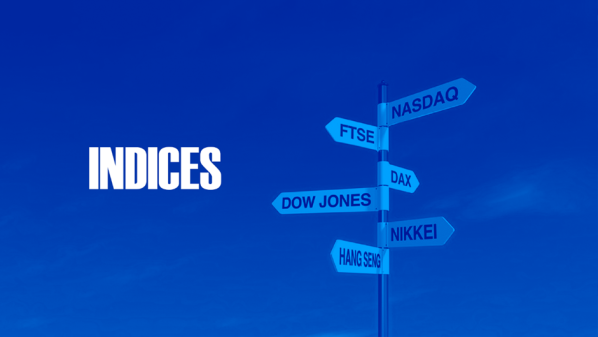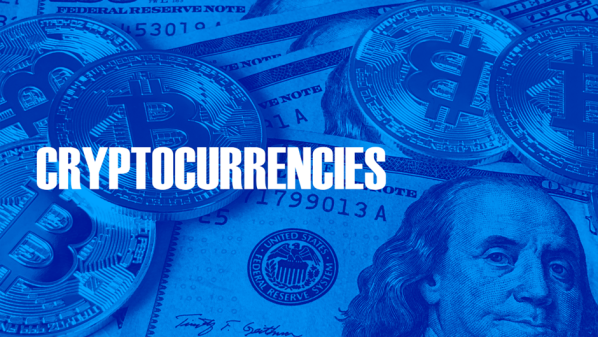
For the week, the Dow Jones fell 1%, the Nasdaq fell 2.18% and the S&P 500 fell 1.82%.
U.S. stocks fell on Friday as investors sought safety after the United States warned Russia could take military action against Ukraine as early as next week. Rising tensions between Russia and Ukraine weighed on risk assets, with the S&P 500 down 1.9% and the Nasdaq 100 down more than 3%, both posting their biggest two-day losses since 2020.
Thursday's inflation data briefly led some traders to speculate that the Federal Reserve may raise interest rates before its March meeting. However, the fourth round of tapered bond-buying schedule released by the New York Fed on Friday showed that the central bank intends to carry out a final round of operations before ending its bond-buying program next month, effectively shattering such speculation.
Chief investment strategist Sam Stovall said: Investors are concerned that the economy is slowing at the worst possible time, just as the Fed is about to raise interest rates, which could pose a threat to healthy economic growth and a bull market, coupled with geopolitical tensions. I think this is the big reason for the market to be volatility and we may face more downside risks in the coming weeks.

Stocks
Zillow Group's (Z.US) fourth-quarter results exceeded expectations, with revenue from the Zillow Offers segment increasing significantly year-on-year to $3.34 billion. Morgan Stanley analyst Brian Nowak raised his price target on Zillow to $76 from $74 and maintained a “wait and see” investment rating on the stock. He pointed to the company's 2025 revenue forecast of $5 billion, about 60% higher than his previous forecast. Although this guidance indicates that the company is increasingly focusing on improving asset turnover and other income.
Most of the U.S. stock semiconductor sectors fell on friday, Xilinx (XLNX.US), AMD (AMD.US) fell more than 3%. On the news, AMD (AMD.US) announced that they have obtained all necessary agency approvals to proceed with the acquisition of Xilinx. The company expects the transaction to close in 2022 completed on or around Valentine's Day, February 14. It is reported that AMD acquired Xilinx in a $35 billion all-stock transaction on October 27, 2020. After the acquisition, AMD will complete the deployment of a computing cloud, edge and intelligent terminal chip platforms.
Cloudflare (NET.US) fourth-quarter revenue jumped 54% from a year earlier to $193.6 million. However, it fell on Friday, falling more than 2.5% to $113.16. Analyst Gregg Moskowitz raised his price target on Cloudflare to $135 from $120 and maintained a “neutral” rating on the stock.

Crypto
After plunging 17% in January, bitcoin rebounded sharply in February, climbing to $44,057 on Tuesday, the cryptocurrencys six-session winning streak the most since September last year. The cryptocurrency market appears to be resurgent, with $85 million in inflows from institutional investors last week, according to a report from CoinShares on Monday.
However, analysts at JPMorgan believe that the fair price of Bitcoin should be $38,000. In a report, JPMorgan strategist Nikolaos Panigirtzoglou said that since bitcoin is about four times more volatile than gold, the fair price of bitcoin should fall around 12%, or $38,000, from its current price of around $43,000. If bitcoin‘s volatility narrows to three times that of gold, bitcoin’s fair price could rise to $50,000, the strategist said.
They believe that the biggest challenge for Bitcoin going forward is its volatility, which discourages some institutions from holding Bitcoin. However, JPMorgan remains bullish on Bitcoin in the long term. In its report, the bank projected a long-term price target for bitcoin of $150,000, up from its January 2021 forecast of $146,000.
Market analysis believes that the rise of the cryptocurrency market in this round is mainly because investors began to quietly test the waters after the previous volatility of risk assets. However, the monetary policies of major global central banks, including the Federal Reserve, are still tight this year. This makes the market remains highly uncertain.

Gold prices extended gains on Friday, hitting the highest level since November last year, due to Ukrainian tensions that stimulated investors' safe-haven demand. Spot gold once rose 2.12% to $1,865.48 an ounce, the highest level since hitting a record high on November 19. Gold prices rose 2.8% this week, the best week since May 7 last year.
U.S National Security Adviser John Sullivan said: on Friday that the United States believes that Russia may seek military action against Ukraine as early as next week, before the end of the Beijing Winter Olympics, or try to spark an internal conflict in Ukraine, which has repeatedly denied plans to attack Ukraine.
Gold's appeal in times of high inflation and geopolitical uncertainty offsets concerns that rising interest rates will hurt demand for gold. Gold prices break higher as the global economy hits if Russia does invade Ukraine, says senior market analyst, Edward Moya. The economic recovery will be hit hard, risks to the outlook have been increasing, and it now appears that accelerated Fed tightening and heightened geopolitical risks will keep many investors safe from gold. No one wants to short gold before the weekend, so prices should be supported by next week.

Oil rose for an eighth week in a row, with the global benchmark Brent breaking above $95 and U.S. oil rising more than 4% to a record high of $94.66 a barrel since September 2014, as tensions between Ukraine and Russia intensified worries about tight global supplies later pared gains.
U.S National Security Adviser Jake Sullivan said on Friday that the U.S believes Russia could take offensive military action as early as next week or try to provoke conflict within Ukraine. This potential Russian invasion of Ukraine could not only disrupt crude supplies but could also trigger U.S retaliation Sanctions.
Oil prices have surged in recent weeks on speculation that a rebound in the global economy will see demand outstrip supply. Senior market analyst Ed Moya said the oil market is waiting for an important catalyst to justify a rise above $100, while the situation in Ukraine appears to be deteriorating, and if Russian military action is confirmed next week, then expectations of crude supply disruptions could be expected. Oil prices will rise by another 10%.
OPEC said on Thursday that a recovery in global oil demand could exceed expectations this year as economic activity rebounds and travel picks up. However, gains in oil prices also faced some headwinds as U.S. and European officials both said they were getting closer to a deal after Iran's nuclear talks resumed in Vienna on Tuesday.

The U.S. dollar index rose on Friday, refreshing its highest since Feb. 3 to 96.11, as rising tensions in Ukraine weighed on investor sentiment and U.S Treasuries rose, with 2-year yields down 7 basis points to 1.516%. The dollar's gains, along with moves in other safe-haven assets such as U.S. Treasuries and the yen, signaled growing concern over the prospect of an invasion.
Erik Nelson, a currency strategist at Wells Fargo Securities, said: 'I tend to think that we will consolidate in the short-term and remain biased towards the downside of the euro and the dollar to the upside against most currencies. EUR/USD slipped 0.68% to 1.3350, weighed down by stop-loss and cross-related selling, with EUR down 0.86% for the week. 1-Month Implied Volatility Skew turned bearish on EUR. 1-Year Implied Volatility The rate hit its highest level in a year. Earlier, European Central Bank President Christine Lagarde said in an interview with the media that raising the ECB's benchmark interest rate now will not bring down the record inflation in the eurozone, but will only hurt the economy.
GBP/USD was up 0.03% at 1.3561, 2-year gilt yields were higher after the GDP data and the euro was weaker against the pound.
OneProSpecial Analyst
Buy or sell or copy trade crypto CFDs atwww.OneProglobal.com
The foregoing is a personal opinion only and does not represent any opinion ofOneProGlobal, nor is there any guarantee of reliability, accuracy or originality in the foregoing.
Forex and CFD trading may pose a risk to your invested capital.
Before making an investment decision, investors should consider their own circumstances to assess the risks of investment products. If necessary, consult a professional investment advisor.
www.oneproglobal.com
Leave a Reply